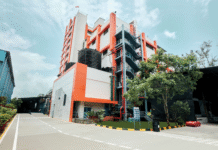Milk is seen as the solution for increasing the value of farm production in India as well as one the key answers to many of the nutritional problems faced by a large section of the country’s population. Although the country is the largest producer of milk in the world at 129 million tonnes (in 2012) the bulk of it is sold as loose milk as opposed to milk collected by the approximately 400 dairies around the country for processing and distribution using a cold chain or some form of packaging.
Thus the first opportunity is to increase the organized collection of milk and then to process it by homogenizing and transporting it using a cold chain either in refrigerated tankers for distribution by retail outlets that have refrigerated dispensers or in polybags that need to be refrigerated by the end-user until the milk is consumed. Even in developed economies where milk packaging went from bottles to plastic containers to gable-top cartons — all requiring refrigeration — there is a trend toward milk polybags. Often, supermarkets also sell a jug in which the polybags are placed and punctured to create a closable spout.

The other processing opportunity for organized dairy collection centers is to heat the milk and to fill it in aseptic packaging such as UHT Tetrapak cartons. UHT milk as it is known has a considerable shelf life depending on the packaging and can be kept if unopened for anywhere from a week to 90 days without refrigeration.
Innovation
Recently there is an innovation in milk polybags where UHT milk can be packed in totally sterile aseptic pouches with the requisite barrier properties to give them shelf life as long as 90 days. For these kinds of long-life milk pouches, nylon-based LDPE polyfilms of heavier thickness are used. This type of packaging process reduces the cost of UHT milk packaging and transport considerably.
There are many innovations in milk packaging including a self-standing sterile pouch, which has its own air-filled handle for holding and pouring known as the Ecolean concept. Another interesting innovation is one of the entries to the James Dyson Foundation awards — a collapsible jug into which milk is poured and which by being pressed as milk is dispensed from it keeps shrinking and thereby keeping out oxygen and extending the life of the milk.
Shelf powder
Milk packaging where it actually needs to stand out on the shelf uses a combination of basic ideas to stand out on the shelf with its own branding while also communicating the basic attributes of purity, freshness, natural, its place of origin or localness, information about the contents. And as Lars G. Wallentin points out in his primer on milk packaging the surfaces of the milk container are an ideal space for storytelling.
This article was first published in the March 2013 issue of Packaging South Asia.











